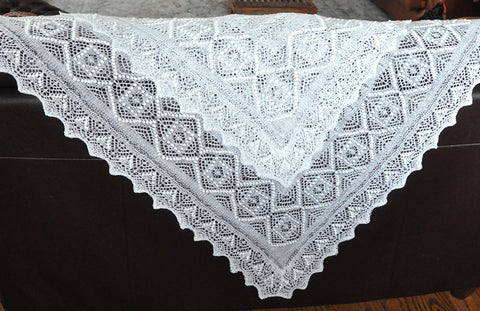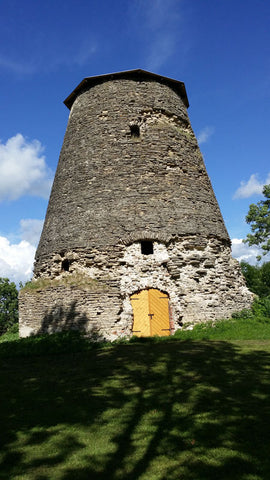Our Baltic Trip 2016, Part 3 - Haapsalu & Lihula Posted on 18 Aug 08:31 , 1 comment
The drive from Tallinn to Haapsalu was dominated by the mysterious Estonian countryside. We spent miles and miles driving through endless acres (or to be European, hectares) of very flat hay fields. Some had round or rectilinear hay bales dotted on the mowed fields. The odd thing was that we saw almost no animals. Perhaps, a hundred cows all told. No horses, sheep, or even people. The occasional farm house or barn, but no life -- very Twilight Zone.
All that changed in Haapsalu, an old spa resort town, historically renowned for its restorative mud, rich in trace minerals. This healing mud made Haapsalu a destination for people from countries far and wide wishing to be cured of aches and pains. The town boasts having the Russian Imperial family (including Alexander I, II and III, Peter I and Nikolai II) among its guests. You can still find spas and rehabilitation centers there. This, however, was not our reason for going. I wanted to go to the Haapsalu Lace Center to see the (small) museum, and see if there was a shawl that needed to come home with me.


The Haapsalu Lace Center
What a lovely selection of shawls! After somewhat halting conversations with the Estonian women who were manning the shop, I bought a large square shawl with a traditional design, a new book “Estonian Knitting 1. Traditions and Techniques” (http://epood.saara.ee/en/pood/estonian-knitting-1), the first in a series, AND a ball of yarn for a forthcoming shawl knitting project of my own.


Ilga's Haapsalu lace shawl
I chose this shawl because of it's extremely fine and beautiful crafts(wo)manship and the simple central pattern looked very nice when folded over into a triangle (as I am likely to wear it). It was certainly a very difficult choice to make. A bit pricey, so I had to chose just one from the scores of gorgeous shawls!
After our mission was accomplished, we walked around the town and on the sandy land along the inlets dotted with reed islands sporting many birds. It was deceptive, we thought we could walk out onto the shore, but the reedy swamps inhibited our exploration as did the positively gale force winds. It was actually hard to stand up or even hold the camera steady. A few hardy sunbathers were lying on the beach nonetheless.

The shore at Haapsalu
From there, we retreated back to the town to look at some of the wonderful ‘wooden lace’ buildings (what we would call ‘gingerbread’----Isn’t ‘wooden lace’ so much more descriptive?) and the remains of the old bishop’s castle, once the seat of government for this part of Estonia.
Mike walked quickly around the ruins, while Ilga waited in the shade of a tree and people-watched while knitting. The castle is a big place, renovated many times during its history, and is currently being restored. A city park has been established around it, including a children’s playground in part of the old moat.

Bishop's castle

Church and tower at Bishop's castle

Gate at Bishop's castle

View from Bishop's castle

View from Bishop's castle
Then we drove through the even emptier countryside – just hayfields scattered here and there, surrounded by stands of trees. Very flat, with few signs of habitation. We came upon the village of Lihula – a rare hill in the plains. This was the site of an ancient hill fort, which had been replaced by a German crusader castle, then by a Swedish castle, then by a manor house. One had a sense of the many layers of history lying together, making for a very evocative site.

Lihula castle ruins

Tower at Lihula castle ruins
In the village itself, we found the striking ruins of an old red brick and stone Orthodox church, now roofless and colonized by trees. It seemed of a piece with the ruins back up on the hill. After a few photos there, we got back on the road, and made it the rest of the way to Pärnu, our stop for the night.

Abandoned Orthodox church

Comments
Jane Chamberlain on
Thanks so much for sharing your adventures in FInland, Estonia. I look forward to learning more about Latvia. Merci beaucoup. Jane